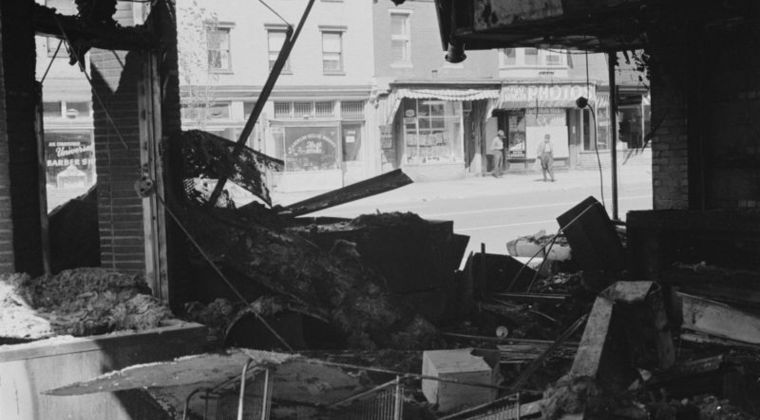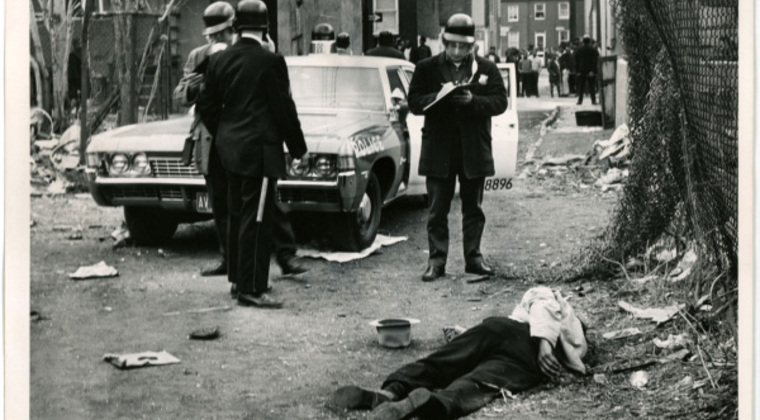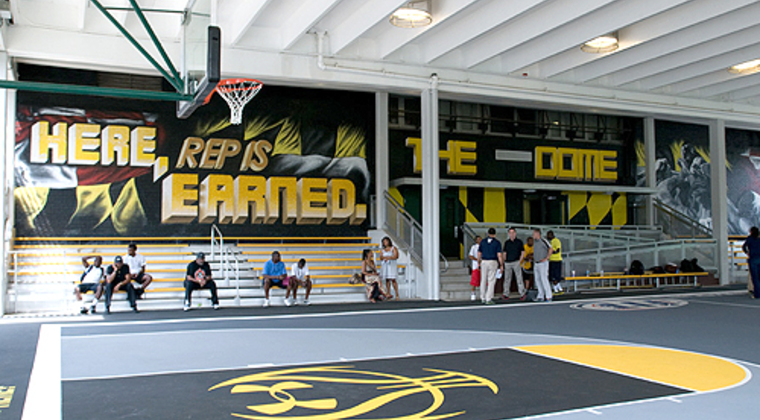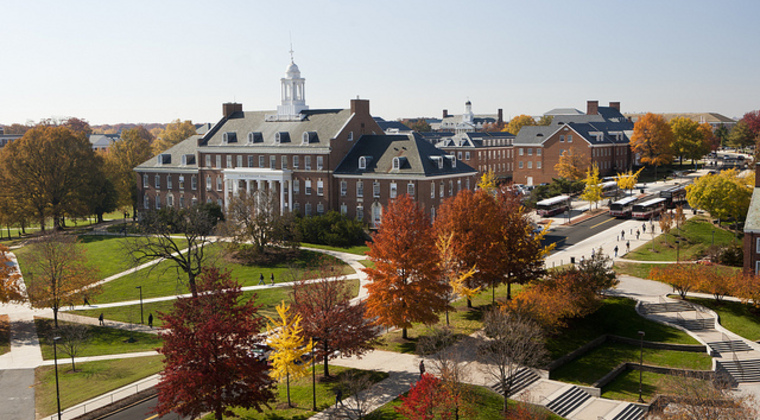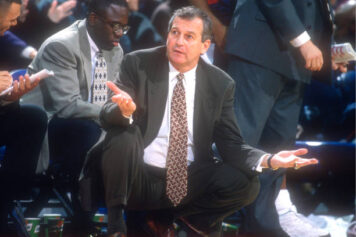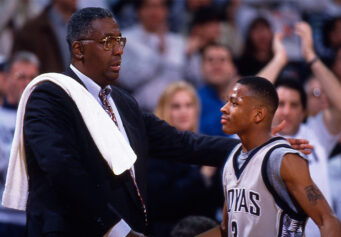On February 16th, 2012, Ernie Graham looked up into the rafters of the University of Maryland’s Comcast Center and saw his #25 hanging there. As the applause rained down during the halftime ceremony of Maryland’s home game against Boston College, honoring him as one of the greatest players to ever wear a Terrapin uniform, the emotions coursing through his body were almost overwhelming.
“I really can’t explain the depth of what I was feeling,” said Graham. “It was an amazing journey to get to that point. It was a great moment for me. There was a combination of so much joy and pain associated with my experience at Maryland, and that #25. To see my number up there, it was almost as if I’d been set free.”
Graham is widely considered to be one of the greatest basketball talents the city of Baltimore has ever produced, one of the early role models in the 1970’s who helped to inspire a younger generation of up-and-comers that would later firmly establish the city as an undeniable hoops hotbed that overflowed, year after year, with wondrous talent.
He is also regarded as one of the city’s great cautionary tales, a young man blessed by the basketball gods with immense gifts whose missteps and poor choices derailed what could have been a long, lucrative and accomplished NBA career.
Graham grew up in East Baltimore, within the rugged North Avenue/Greenmount Avenue corridor, the second-oldest of five children. His father worked at Sparrows Point, the behemoth Bethlehem Steel industrial complex that stretched four miles from end to end and once symbolized America’s manufacturing superiority. The work there, for laborers like Graham’s dad, was beyond merely backbreaking and dangerous. It could also be deadly.
Its furnaces, which had the greatest metal producing capacity on earth, were vital to the country’s rise as an international and economic super-power, churning out the raw materials that supported the fighting apparatus during World Wars I and II. The scorching fires also produced, among many things, the steel for America’s booming automobile industry, Campbell Soup cans and the wire cables and girders that went into building awe-inspiring engineering feats like the George Washington and Golden State suspension bridges.
Graham’s father also drove a cab in his spare time. His mother worked in the nursing field.
“They worked very hard to try to provide for us and grab their little slice of the American Dream,” said Graham.
Like most kids in the neighborhood, Graham played whatever sport was in season. On the baseball field, he was a slick-fielding third baseman. In football, he was a tall, slender quarterback who could do damage with his strong arm and fleet feet. But basketball began to pull and tug at him in ways that the other sports didn’t by the time he was 12 years old.
Playing in the CYO program at St. Ann’s Catholic Church, and at the Cecil-Kirk Recreation Center, he began to excel.
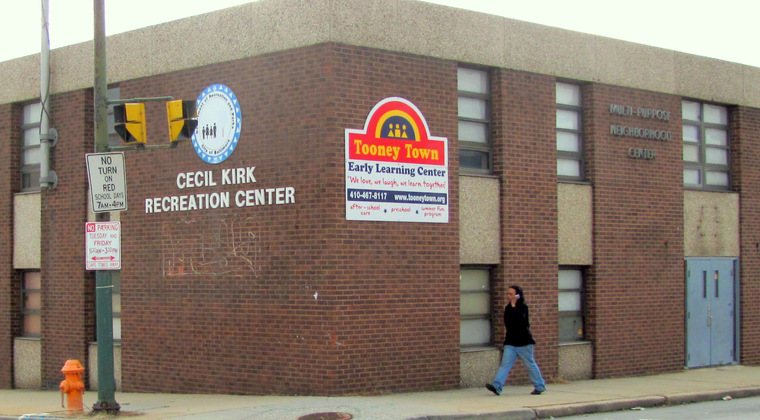
“Being good at basketball helped me to become socially acceptable to many people,” said Graham. “When I started experiencing some success, that drove me to want to become better because, in my eyes, people started to look at me like, ‘Maybe you are somebody special.’”
“When Ernie was 12, he already had some real good size to him, but he also had some advanced ability,” said his first coach, the legendary grassroots coach and community mentor Anthony “Dudie” Lewis, who went on to mentor other great East Baltimore players like Reggie Lewis, David Wingate and Rudy Gay during his tenure at the Cecil-Kirk Rec Center. “You could tell that he was going to become a very good basketball player. He was an instant mismatch. You couldn’t put a guard on him because of his size and you couldn’t put a big man on him because of his agility and the way he could handle the ball. And he was a great kid to coach. He loved to work hard because he wanted to become the best.”
But there was a dark side to the acceptance that Graham garnered as a rising basketball prodigy.
“As a youngster, I didn’t feel all that great about myself,” said Graham. “I was tall, dark-skinned, had broken my front teeth and had a lot of issues going on inside of me with regards to my self- worth and self-esteem. I had a bed-wetting problem when I was young that lasted all the way through high school. I did a lot of things because I wanted people to like me, mainly because I found it hard to like myself.”
“Basketball became a mechanism that I used to entertain people and to get them to like me,” he continued. “So it meant a lot more in my life, at that time, than it should have.”
Behind the façade of this burgeoning whiz kid on the hardwood, who was also bright enough to be skipped from the fourth to the sixth grade, was a debilitating fear that was emotionally crippling at times.
At the age of nine, he was overwhelmed by the violence and riots that he witnessed in his neighborhood after the assassination of Dr. Martin Luther King, Jr. in 1968.
(Baltimore Riots, 1968. Photo Credit: donsmarylandhistory.wikispaces.com)
Graham's neighborhood was destroyed during the riots. With residents unleashing their frustrations with Martin Luther King's murder, along with the pervasive unemployment, overcrowded housing and debilitating poverty, his community was obliterated. Throughout the city, over 5,000 people were arrested. More than 1,000 businesses were destroyed. More than 700 people were injured. Six people were killed.
“There was so much tension in the air and I saw my neighborhood getting burned down to the ground,” said Graham. “There were a lot of businesses on Greenmount Avenue that were looted and set on fire. I remember seeing the army tanks and trucks and military everywhere. I remember people running through the streets and the alleys with televisions and clothes. I remember the smoke and the fire, the gunshots and the constant noise of ambulances. A lot of fear began to set in on the inside. I became very afraid, all the time, as a young man.”
(Baltimore Riots, 1968. Photo Credit: Archives.ubalt.edu)
Those fears were exacerbated by his low self-esteem, and the fact that he also didn’t enjoy fighting.
“I wasn’t a tough guy,” said Graham. “I was more of a peacemaker. I didn’t like to fight. I didn’t like violence. And growing up in that neighborhood, fighting was something you had to do. You didn’t have a choice. Every day, I was afraid that people were going to know who I really was, what I was really thinking, how I really thought about myself.”
At the age of 13, those antagonizing thoughts intensified.
“I was victimized by a stranger,” said Graham. “There were a lot of social predators, middle-aged men who would drive through our neighborhood, trying to lure us into their cars so they could touch us. I was out in the street late one night, on my way home, and this man jumped out on me. He tried to pull me into the bushes. I fought him off and eventually he let me go, but he was touching and grabbing at my private parts. That shook me up really bad. I never told anybody about that. Back then, that wasn’t something you could go home and say. So that was another thing, along with everything else, that I kept bottled up inside of me.”
Around that same time is when Graham began experimenting with marijuana. When some guys that he played ball with offered him some, he readily accepted. He wanted to be seen as cool, and didn’t want his friends and other people talking about and laughing at him.
“Basketball was the only thing that made me feel good about myself,” said Graham. “The problem with that was, when you continually use that as a crutch to escape some of the deeper things going on, all that other stuff compounds. When the game was going on, I wanted to be the best. But when the game was over, I didn’t want to be anybody.”
As a young player at Lake Clifton High School, Graham didn’t yet see himself as one of the best players in the city.
“At Lake Clifton, I was playing with my older brother and we had some monster teams,” said Graham. “I didn’t yet realize that I was one of the best players in the city early on because it seemed like everybody could play. There were great players all over the city. Basketball was really becoming huge at that time. The great player from Dunbar, Skip Wise, was the first player that we saw who went out and put our city on the map during his incredible freshman year at Clemson University.”
“If you were from Baltimore and played ball back then, you couldn’t help but be a Skip Wise fan,” he continued. “Everybody who was coming up after him wanted to be somebody and do the things that he could do. We were hungry, and basketball seemed like a way that we could accomplish some things.”
But others could see, even as a ninth and tenth grader, the potential that he possessed.
“Even when he was a young player in high school, he had the skills to take over and be special,” said Lewis. “As he got older, he began to develop the mentality, as opposed to simply deferring to the other guys on the team simply because they were older.”
Due to a new re-districting system that the Baltimore City Public Schools put in place, Graham was zoned to attend Dunbar High School for his senior season, after winning back-to-back city championships at Lake Clifton.
“Lake Clifton and Dunbar were huge rivals,” Graham said. “I wasn’t happy about the move. I’d spent my whole high school career wanting to beat Dunbar, and now, I had to leave my guys and play my senior year with what we perceived to be the enemy. That really irked me.”
The returning Dunbar players were initially displeased as well. At the start of practice, there was a tangible negativity around Graham’s presence. But Dunbar’s young second-year coach, Bob Wade, a former player in the National Football League who would go on to become one of the most accomplished high school coaches in the country before being named the Head Coach at the University of Maryland years later in the wake of Len Bias’ death, commanded the respect of all of his players. Wade ensured that Ernie was welcomed into the team’s fabric with open arms.
“I was met with a lot of negativity when I showed up at Dunbar, but Coach Wade took care of all of that friction,” said Graham. “He was a great man and an outstanding role model. He gave me a job at the liquor store that he owned so that I could earn some money and he really cared about all of his players as human beings, not because they were great athletes.”
“Ernie and his brother Kevin had tremendous success at Lake Clifton,” said Wade. “When he transferred into Dunbar, we had Calvin Maddox, who was an outstanding point guard, but Ernie was that Five-Star player that gave us the toughness that we needed. I was going into my second year as Dunbar’s head coach and he was instrumental to our success. He played a big role in establishing the foundation and helping our teams to become the dominant force that we later became on a national scale.”
“I was Coach Wade’s first big-time player and our team won his first championship,” said Graham.
As a high school senior, the 6-foot-8 Graham averaged 27 points and 22 rebounds per game.
“I got a chance to see Ernie when I was a small kid, when he would come to play at the Lafayette Recreation Center in the Lafayette Projects where I lived,” said Muggsy Bogues, the diminutive 5-foot-3 wonder who starred at Wake Forest University before playing 14 years in the NBA, most notably for the Charlotte Hornets. “We used to watch him play at the rec, and we’d go over to The Dome at the Madison Recreation Center to watch his games. He was tall, but the way he could handle the ball was unusual for his a guy with his height. When he was in high school, especially when he came over to Dunbar, I became a huge Ernie Graham fan. His talent was unbelievable.”
(The Dome, Baltimore's Legendary Basketball Court. Photo Credit: NBA.com)
Despite the incongruity of their styles of play, Bogues extrapolated numerous elements from Graham’s game.
“I loved his attitude on the court,” said Bogues. “He was relentless and aggressive. Ernie could maneuver all over the court with the ball in his hands, getting to spots that other big guys could not get to off the dribble. He was a big guard who could facilitate, but he could also play in the post with his back to the basket. He was so crafty and fundamentally sound. And he had an innate knack for scoring the ball. Ernie could give anybody buckets. But not only did he know how to score, he also knew how to make the other guys around him better.”
“Ernie was just so versatile,” said Wade. “He was truly one of the first big, gifted guys who could play the guard position. He could dominate both inside and out. So we moved him around, gave him the opportunity to flash to the elbow, step out and do some work on the perimeter, shoot his jumpers and attack the paint, along with playing on the block. He could adapt to any defense, break a press by himself with his ball-handling and vision and do anything he wanted on offense. He was a unique talent.”
As his senior season wound down in the spring of 1977, Graham narrowed his college choices down to the University of Texas at El Paso, UNLV, Georgetown and Maryland.
“I liked Don Haskins, the coach at Texas, El Paso,” said Graham. “He was a good man. And Tiny Archibald, the great NBA point guard, and I had built a relationship. Tiny dug my game and wanted me to go there because that was his alma mater. I liked Jerry Tarkanian out in Vegas a lot too. But my father told me that he didn’t want me going that far away to college. So my choices narrowed down to Georgetown and Maryland.”
“I loved John Thompson, but Georgetown was very strict with their academics,” he continued. “It was all about classes, study hall and practice. There was no free time. Things at Maryland were a little looser. When I committed there, head coach Lefty Driesell said I was the guy. He said they were going to close their recruitment on the small forward position. But that’s not what eventually happened.”
“I really thought he would take John Thompson’s offer and go to Georgetown,” said Wade. “But in his heart, Ernie really wanted to go to Maryland. He didn’t realize that Maryland’s first choice, in terms of a wing player to recruit, was Brooklyn’s Albert King. Albert, back then, was considered the top high school player in the country. The hype around him was unreal. He was like the LeBron James of high school basketball at the time. To this day, he's considered one of the greatest high school players of all time.”
“They didn’t know if they were going to be successful in getting Albert, so they went after Ernie as their backup plan,” Wade continued. “After Ernie committed to Maryland, Albert King signed.”
(The University of Maryland. Photo Credit: umd.edu)
Graham was unfazed when King decided to play for the Terrapins.
“I never thought anybody was better than me, so it didn’t matter to me,” said Graham. “Albert was considered the #1 player in the country, but I had me as the best player in the country. I didn’t care who they signed, I knew that I was gonna get mine. Plus, all I cared about was winning. So I thought with Albert coming in, the talent that they had returning, and the fact that I could play multiple positions, the good times were getting ready to roll.”
To Be Continued… Read Part II Here

